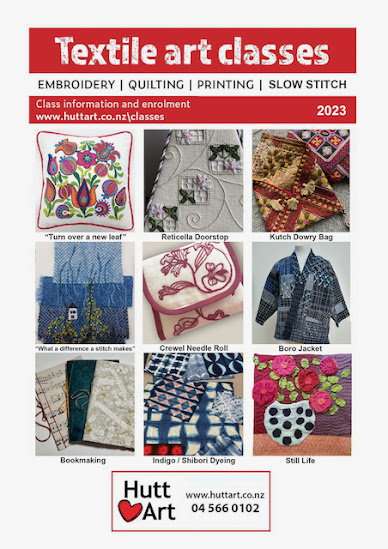2024 Classes
I'm a textile artist based in Wellington New Zealand and I teach a range of dyeing, printing, quilting and bookmaking classes. The first classes for the year are usually the indigo dyeing classes as they are much more fun if we can hold them outside!
This is a list of my current bookings
Indigo Dyeing and shibori - Tawa College, Tawa, Wellington. There are still spaces in this class.
Saturday 9th March 10-4pm.
Karori Art and Craft Rooms, Karori, Wellington.
Printing on Fabric - 24th February 10-4pm
This class can be booked online here.
Inspired by Boro (quilts/patches) - 25th May
Crazy Piecing - 30th June
Sashiko - 27th July
Quilt As You Go bags/placemats/table runners. - 10th November
Hutt Art Society Rooms, Lower Hutt
Indigo Dyeing and Shibori - 3rd March 10-4 (Class Full - waiting list available)
Komebukuro Bag - 2 classes - 7th April 1-4pm, 12th May 1-4pm.
Inspired by Boro (jacket). 4 sessions - 16th June 10-4pm, (Class Full, waiting list available)
21 July, 4 august, 25 August, 1-4pm.
I have been invited to teach at the New Zealand Quilt Symposium 2024. This is to be held in Cambridge in the North Island of New Zealand.
The classes are not confirmed yet but I hope to be able to tell people soon.




































